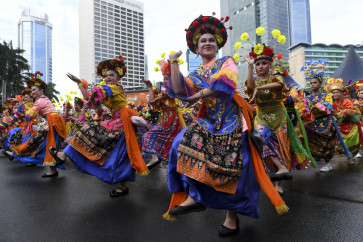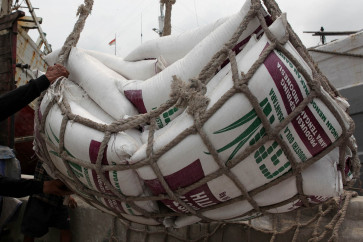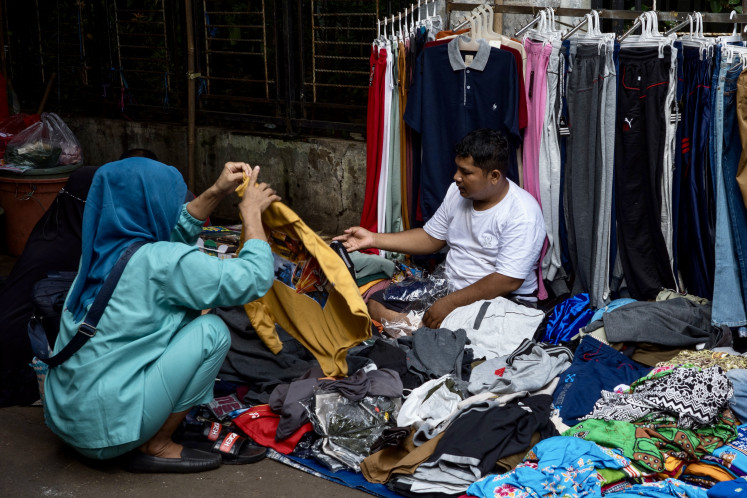Popular Reads
Top Results
Can't find what you're looking for?
View all search resultsPopular Reads
Top Results
Can't find what you're looking for?
View all search resultsProlonged drought causes failed harvests
Prolonged drought has caused failed harvests across thousands of hectares of shrimp ponds and rice fields in South Lampung, as well as clean water crises in a number of regencies in Lampung province, including West Lampung and Tanggamus, which are rich in forested areas
Change text size
Gift Premium Articles
to Anyone
P
rolonged drought has caused failed harvests across thousands of hectares of shrimp ponds and rice fields in South Lampung, as well as clean water crises in a number of regencies in Lampung province, including West Lampung and Tanggamus, which are rich in forested areas.
Lampung’s provincial agriculture agency has yet to determine the exact total area of rice fields that has been affected but estimates are predicted to be over 3,000 hectares.
With regards to shrimp ponds, of the approximately 5,000 hectares that normally produce up to 15,000 tons of shrimps annually, only about 300 hectares can be cultivated because of the prolonged drought.
“Most shrimp farmers decided not to continue their businesses. The shrimps do not die just because of the heat but also because of the dirty water in the ponds due to non-current air circulation,” shrimp farmer Ratno of Sragi, from South Lampung, said on Wednesday.
In Tanggamus, drought has caused the loss of harvests in some 1,000 hectares of rice fields because the Batu Tegi dam can no longer provide water. Other dams in the province, including Way Besai dam in West Lampung and Way Jepara dam in East Lampung are also experiencing the same problems.
Data at the Meteorology, Climatology and Geophysics Agency’s (BMKG) Lampung branch predicted that the peak of this year’s dry season would occur this month, with temperatures reaching as high as 35 degrees Celsius.
“Actually, the dry season began in Lampung at the end of May,” Bambang Nova Setyanto, the head of the agency, confirmed.
He said the highest temperatures usually take place between noon and 2 p.m. This, he said, was part of the dry season’s extreme weather. “Among other things to watch out for during the dry season are strong winds without rain,” he said.
Bambang said his office has not yet been able to predict when the drought will end. “Calculations can only be made after three months of drought. Otherwise, the results will not be precise,” he said.
The droughts in Bandarlampung, Tanggamus and West Lampung Barat have forced locals to conserve water and limit water consumption. “We just take a bath once a day because our wells are drying out. Normally, we would bathe twice a day,” said Dandy of Campangraya, from Bandarlampung.
Edi Siswanto of Kotaagung, Tanggamus, expressed his curiosity as to why his region, which is located near the Bukit Barisan National Park (TNBBS), is also experiencing a water crisis. “This is ironic because when the rainy season comes, we get flooded with water,” he said.
A very different reality, however, is being experienced by customers of Bandarlampung’s municipal-owned tap water company Way Rilau, thanks to the company’s being able to produce and distribute clean water to its 33,702 customers normally.
The company’s executive director, Gustimigo, assured locals that the prolonged drought would not affect its capabilities in supplying clean water to its customers.










